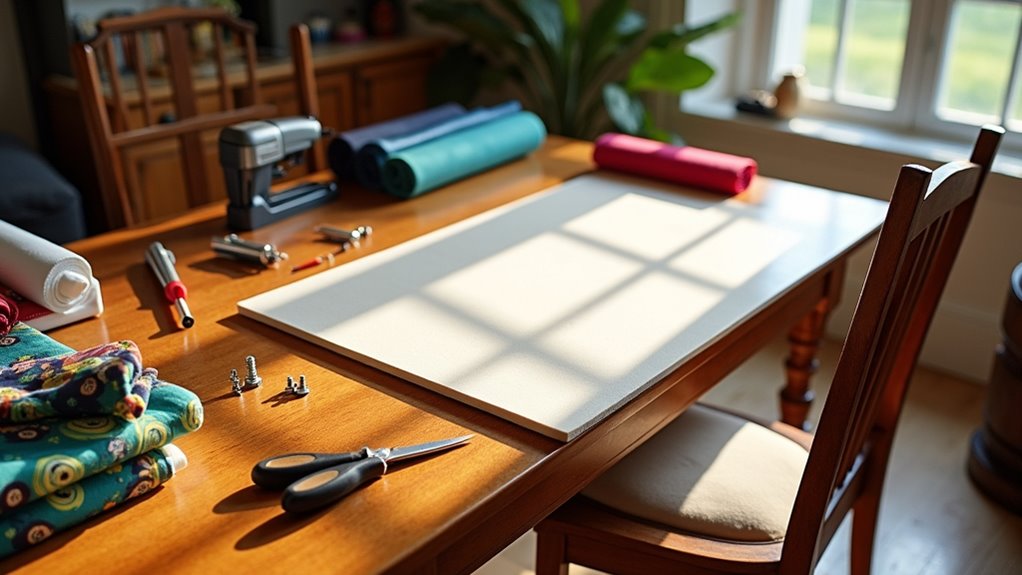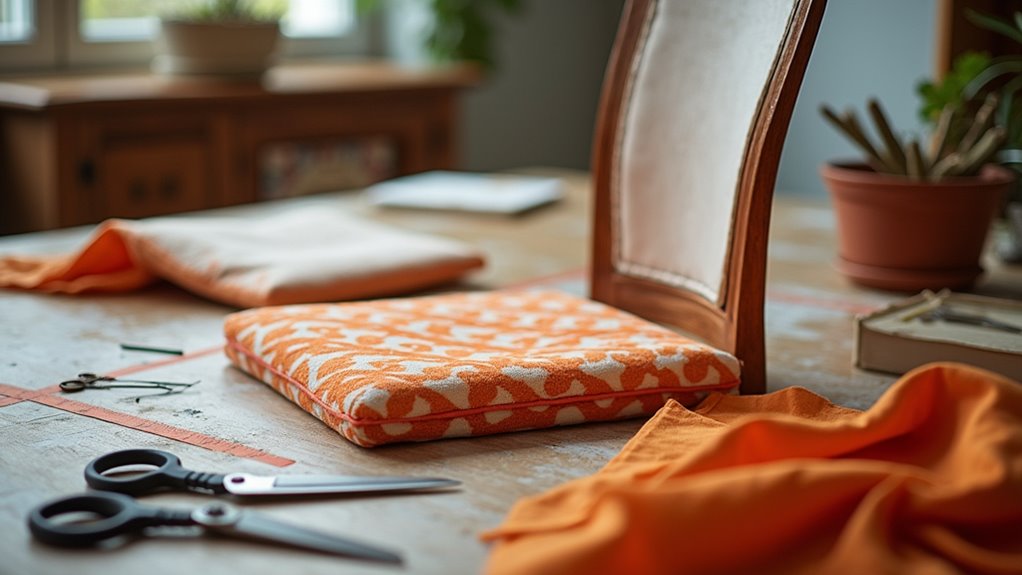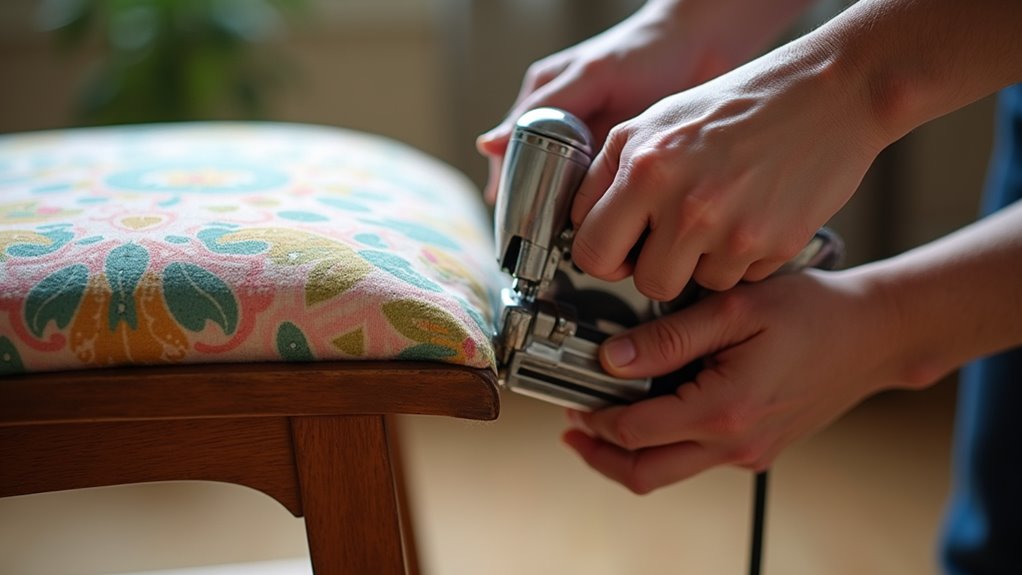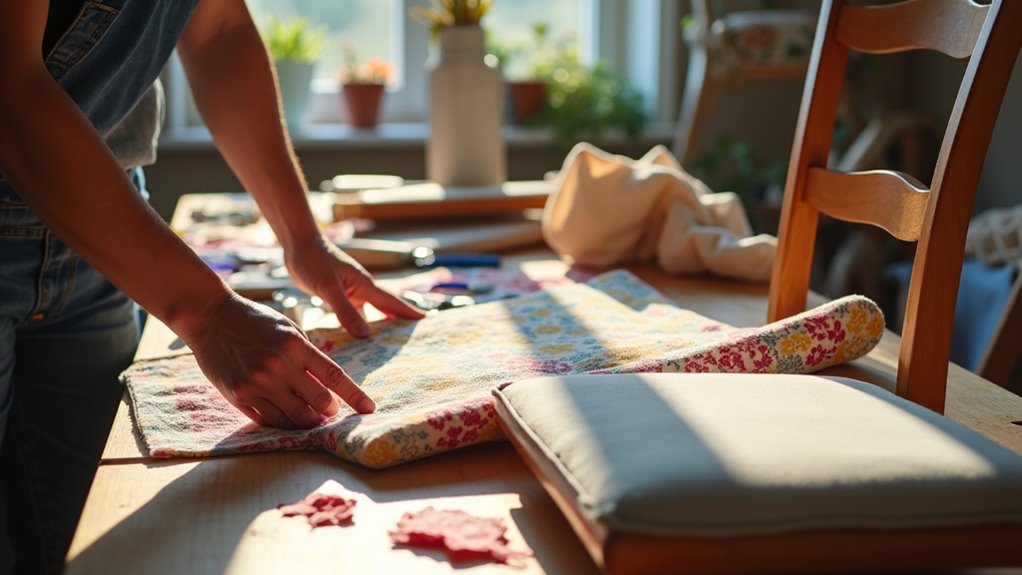Reupholstering a dining chair cushion can be simplified into three easy steps. First, gather essential tools like a staple gun and fabric. Next, measure and cut the new fabric, ensuring to use an old fabric as a template for accuracy. Lastly, attach the new fabric by securing it tightly with staples and reassemble the cushion to the chair frame. With these fundamental steps, one can revitalize their furniture; further details on techniques await for a complete transformation.
Key Takeaways
- Remove the old fabric carefully using a tack puller, noting the orientation for accurate reupholstering.
- Cut new upholstery fabric using the old fabric as a template, adding extra material for folds.
- Position the new fabric face-down, center the cushion, and staple tightly starting from the center outwards.
- Trim excess fabric after stapling, ensuring corners are smooth and avoiding screw holes during the process.
- Reattach the cushion to the chair frame, securing screws through new layers for a professional finish.
Gather Your Tools and Materials

When embarking on the project of reupholstering a dining chair cushion, an extensive array of tools and materials is essential for achieving a successful transformation. Tool selection begins with a staple gun, critical for attaching fabric, and a screwdriver or drill to dismantle the chair. A tack puller or pliers will ease the removal of old staples, while a hammer ensures staples sit flush. Evaluating the amount of fabric needed is crucial, keeping in mind that standard dining chairs typically require 1 to 2 yards of fabric for adequate coverage. Assess the furniture’s frame sturdiness before starting to ensure that the cushion will be securely supported. Additionally, using upholstery fabric as a primary material provides durability and style options for your chair.
For material options, upholstery foam serves as the foundational cushioning, and batting or Dacron provides a smoother finish. Tape measures and fabric markers are vital for accurate measurements, while fabric scissors enable precise cuts.
Prepare and Cut the New Fabric

A successful reupholstering project hinges on meticulously preparing and cutting the new fabric, setting the stage for a flawless finish. The first step is to use the old fabric as a template, ensuring accurate measurements for the new piece. When measuring, consider fabric types to avoid shrinkage, and add extra material for folding and stapling. Juliette Cane Dining Side Chairs are a perfect example of furniture that showcases exquisite craftsmanship, providing aesthetic inspiration for your project.
Here’s a simple table to guide through the cutting process:
| Step | Details |
|---|---|
| Remove Old Fabric | Use pliers; label pieces for orientation. |
| Measure Cushion | Include thickness and add 3-4 inches. |
| Prepare New Fabric | Pre-wash, iron, and layout flat. |
| Mark Fabric | Use chalk to trace around the template. |
| Cut Carefully | Employ sharp scissors or a rotary cutter. |
This preparation showcases essential cutting techniques, ensuring a quality reupholstered cushion.
Attach the New Fabric and Reattach the Cushion

With the new fabric expertly cut and prepared, the next phase involves attaching it securely to the dining chair cushion. The chosen fabric, whether cotton or a more durable synthetic, is positioned face-down on a flat surface. Centering the cushion, the crafter employs effective stapling techniques, starting by stapling the fabric to the underside’s center. Tautly pulling the fabric to the opposite side, they secure it with another staple, repeating for all sides to eliminate wrinkles. For corners, pleating creates a smooth finish, ensuring staples remain clear of screw holes. Once the fabric is firmly attached, excess material is trimmed, and the cushion is realigned with the chair frame, guiding screws through the new layers to secure the transformed seat. Opting for Water-Repellent and Stain-Resistant materials can further protect the chair cushion from spills and everyday wear.







